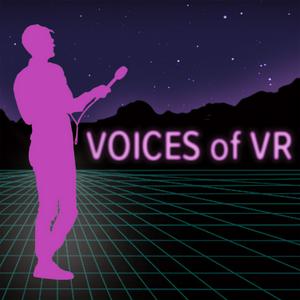#1560: Walkabout Mini Golf’s Incredible Fusion of Worldbuilding, Gameplay, Social Dynamics, & DLC Experimentation
Walkabout Mini Golf is really an incredible accomplishment of VR design with its fusion of worldbuilding, compelling physics-based gameplay, the unique social dynamics and community it's able to cultivate, and over 4 1/2 years of consistent DLC courses every 8 weeks or so. They have launched 33 total courses, and just recently announced that they're bumping the price by $10 and adding 6 DLC courses into the base game so that is now 14 courses for $24.99. It's still an incredible deal, especially considering that there are still 19 DLC courses available, which has helped earn the #20 spot on Meta's best-selling Quest apps of all time.
During my trip to SXSW, I had a chance to speak with the original solo developer of Walkabout Mini Golf, Lucas Martell, who has since grown the Mighty Coconut Studio team to 35 people. We talk about how their design process for courses starts with worldbuilding, but also how his script-writing background has helped to inform how they tell the story of each of these worlds through the evolution of game mechanics and shape language that each course is exploring. After I had a chance to interview Martell, I was given access to all 33 of the courses, which I have played through over the past week in order to provide a bit more context on what they've been able to accomplish with Walkabout Mini Golf. It's certainly an achievement within VR design that combines the best part of immersive worldbuilding, convincing gameplay, and compelling social dynamics that keeps players coming back again and again.Be sure to check out the table below which lists the timeline of the release of the 33 different courses that are now available.
OrderCourse NameRelease DateCategory1.1Tourist TrapSep 24, 2020Classic1.1Cherry BlossomSep 24, 2020Classic1.1Seagull stacksSep 24, 2020Classic1.1Arizona ModernSep 24, 2020Classic5Original GothicNov 8, 2020Classic6Tethys StationMar 3, 2021Classic7Bogey's BonanzaJun 10, 2021Classic8Quixote ValleyOct 7, 2021Classic9Gardens of BabylonNov 18, 2021Lost Cities10Shangri-La (Added to Base Game)Dec 16, 2021Lost Cities11Sweetopia (Added to Base Game)Feb 17, 2022DLC12El DoradoJun 2, 2022Lost Cities13LabyrinthJul 28, 2022Licensed IP1420,000 Leagues Under the Sea (Added to Base Game)Sep 29, 2022Jules Verne15MystNov 15, 2022Licensed IP16AtlantisJan 26, 2023Lost Cities17Upside Town (Added to Base Game)Mar 9, 2023DLC18Temple at ZerzuraApr 20, 2023Lost Cities19Journey to the Center of the EarthJun 8, 2023Jules Verne20Laser Lair (Added to Base Game)Jul 20, 2023Evil Lair21Alfheim (Added to Base Game)Sep 7, 2023DLC22Widow’s WalkaboutOct 19, 2023DLC23Meow WolfDec 7, 2023Licensed IP24Around the World in 80 DaysJan 18, 2024Jules Verne25Ice LairMar 7, 2024Evil Lair26VeniceApril 25, 2024DLC27Wallace & GromitJul 25, 2024Licensed IP28Mars GardensSep 10, 2024Original IP298-Bit LairOct 24, 2024Evil Lair30Holiday HideawayDec 5, 2024DLC31Viva Las ElvisJan 16, 2025Licensed IP32Mount OlympusMar 6, 2025DLC33Raptor CliffsMay 1, 2025DLC
This is a listener-supported podcast through the Voices of VR Patreon.
Music: Fatality
